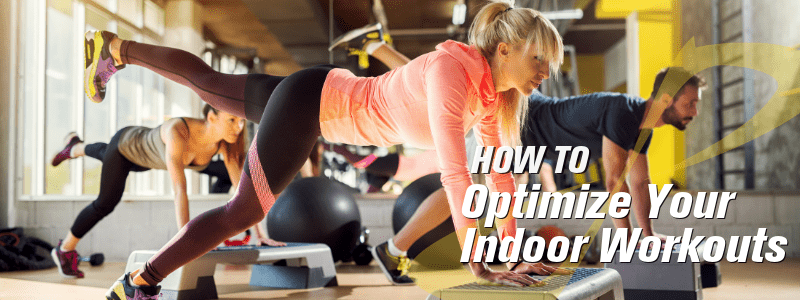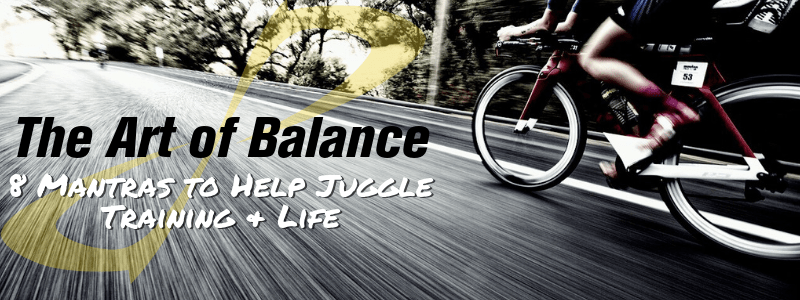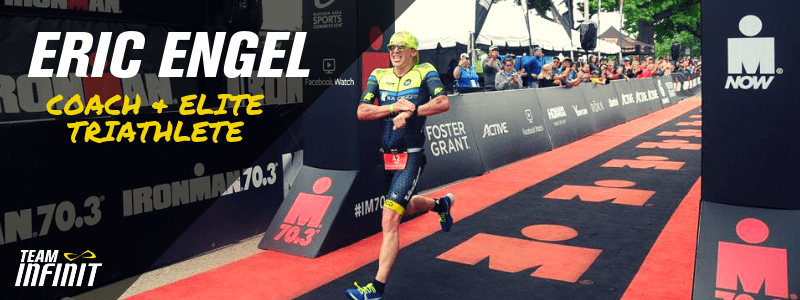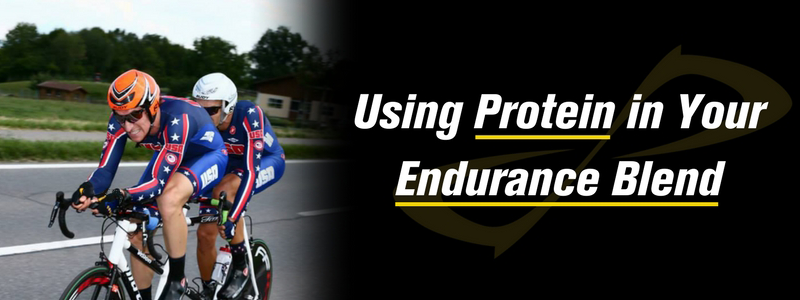Optimize your At-Home Fitness Plan with INFINIT Nutrition
- 25 Jun 2019

INFINIT Head Formulation Specialist, Colin Riley, MS, RDN, CSSD outlines his tips to avoid training slumps even when you’re stuck indoors
Wet weather and extreme temperatures can make outdoor workouts next to impossible sometimes.
No need to let your training suffer when you can’t get outside for your workout. Forget the forecast and pay no attention to the weatherman — We are here to offer you some tips to make sure you’re getting in quality training with your at-home fitness plan, so you’re PR ready for your next big competition!

Bike Training
Indoor training, although typically saved for the wintertime, is a great option when you can’t get outside due to the weather.
With virtual trainer riding options like Zwift, you can still hop in a group ride and cruise around Watopia (the Zwift Virtual World) or even places like London and New York City!

TrainerRoad is another popular option that offers literally hundreds (maybe even thousands) of different workouts and variations of workouts targeted toward different training types (e.g. Endurance, Tempo, Sweet Spot, Threshold, VO2 Max, etc.).
Don’t have an indoor trainer yet? Head to your local gym or Indoor Cycling Studio where you can get in a quick 45-60 minute high-intensity interval session. Even though this may not be your usual type of ride, and it’s on a different bike other than your own, you’re sure to get in a great workout that will translate to faster riding when you get back outside.

Another good alternative to outdoor bike training is hitting the rowing machine! Rowing can provide a full-body workout that targets a lot of the same muscles used while cycling.
Make sure you warm-up for at least 10 minutes before doing any types of intervals. Do some short, hard intervals (e.g. 10 x 1 minute hard with 1 min easy after each one) or some longer more sustained intervals such as 4-6 x 6 minutes with 2-3 minutes recovery. If anything unusual starts to hurt (such as your low back), stop and stretch out for a few minutes.
Run Training
If you’re a runner and the weather has you stuck inside, you have a number of different options to make sure you’re not letting your fitness suffer.
Consider some cross-training like a spin class or going for a swim to mix up your regular running routine. If you rarely ride or swim, you’ll get a good cardiovascular workout and work some muscles that you might not work while running.
If you’ve really got to stick to your schedule and get your miles in, you can always find an indoor track at a local gym or university, or my favorite, the treadmill.

I know for some runners the thought of an hour on the “dreadmill” seems like an eternity of torture, but the treadmill (just like the bike trainer) can offer you a high-quality workout with no stops, and an effort you can dial in.
The key to treadmill running is to MIX IT UP.
Don’t just run a steady aerobic pace for 1 hour. That can be pretty boring. Instead, try some of these options:
- Descending pace run - Start at an easy pace and every few minutes (e.g. 3), increase the pace by 0.1 mph - build up to a tempo pace or keep going and see how long you can push yourself!
- Intervals (think of it as a track workout) - warm-up for 10-15 minutes (gradually build your pace every 1-2 minutes) and include some 30 second pickups with 30-60 seconds easy b/w each one. Then do a round of ½ mile repeats with a ¼ mile easy b/w each one. Mix up the interval/rest duration and speed to come up with varying types of workouts.
- Hills - Do hill repeats of 30-90 seconds in duration at varying inclines - The sky is really the limit as far as creativity goes and coming up with a workout:
Choose a pace that is fast but sustainable - consider increasing the speed slightly as the intervals become shorter.
4 x 90 seconds at an incline of 3, 4, 5, and 6 w/ equal time recovery
4 x 60 seconds at an incline of 4, 5, 6, and 7 w/ equal time recovery
4 x 30 seconds at an incline of 5, 6, 7, and 8 w/ 1 min recovery
Note: During the recovery, drop the incline down to 0 and reduce your speed.
Strength Training
Another great option for your at-home fitness plan that is often overlooked by runners and endurance athletes is strength training.
Strength training can be a great addition to any athlete’s weekly training plan, especially for those that are prone to injury. Many injuries often times step from muscle imbalances or muscle weakness in certain areas (e.g. hips, core) which can lead to fatiguing early and losing proper form while running.
Incorporating strength training into a training plan can result in greater force generation by the muscles helping you stay strong going up hills and when there is a strong headwind.

Female runners/athletes may also benefit from strength training even more than males due to the fact that males naturally tend to have more muscle mass than females. By incorporating bodyweight and heavier weight training into your workout schedule, female athletes can build muscle tone and strength to help improve overall speed and endurance.
Older athletes may have the most to gain from incorporating strength training into their regular routine, both from a performance and overall health standpoint. Lean body mass (aka muscle) tends to start decreasing as early as your 30’s and especially in your 40’s and 50’s. Losing muscle means losing power and speed no matter what sport you’re competing in. Strength training has been proven to stop and reverse lean muscle wasting in athletes over the age of 40.
Flexibility Training
Feeling burned out from all of your swim, bike, and run workouts? Use this as an opportunity to do some active recovery!
Take a physical and mental break and try out a yoga class at your local gym or yoga studio. Yoga can be a great way to focus on both strength and flexibility and also help keep you injury free.

Pilates and Barre are two popular group exercise classes that are popping up at gyms and specialty fitness studios around the country. These types of workouts focus on a combination of flexibility and strength training.
Not to mention, going to group classes is a great way to meet new people — especially if you do a lot of your swim, bike, and run workouts alone!
Fueling and Hydrating for Indoor Workouts
Just because you’re staying indoors doesn’t mean you don’t need to fuel and/or hydrate!
If you’re planning on a longer trainer ride over 2.5 hours, use your custom “ENDURANCE” or “BIKE” blend to keep you fueled and hydrated the entire time! For workouts that are less than 2.5 hours (bike, run, swim, etc.) stick with your “SPEED” or “RUN” blend. If you don’t have your own custom blends, sign up for a free consult here and we’ll help you dial them in!
If you’re looking for a lower calorie option to help keep you hydrated during some of your shorter indoor workouts, check out INFINIT’s HYDRATEactive hydration preset formula which has just 100 calories per serving, 200 mg sodium to help replace some of those electrolytes you’re losing, along with 2,000 mg beta-alanine which can help you push through those high intensity intervals.
You may think that plain water will suffice to keep you hydrated, but in fact, water can do just the opposite!
Plain water can cause the osmolality (concentration) of the bloodstream to decrease which can result in turning off your drive to drink while also increasing your urine production. This means that you are more likely to become dehydrated if only drinking plain water.

When training indoors, especially when you don’t have a fan blowing on you, you aren’t going to get that normal airflow you do while outside biking or running which does provide some evaporative cooling. Without that evaporation of the sweat, the body can quickly start to warm-up, causing your sweat rate to increase which can increase your risk for dehydration and ultimately a decrease in performance.
So if you are planning on a harder, more intense workout, consider using a fan so you don’t overheat and can adequately hit the intervals you are targeting. If you have a more steady/aerobic ride, consider not using a fan and use it as an opportunity to acclimate your body to the heat. Not having a fan blowing on you with no airflow, will cause you to sweat more than you’re used to, making you a more efficient sweater and ultimately help you perform better in the heat.
If you haven’t had a chance to do a sweat rate test yet, this is a great opportunity to do so. Whether you’re training for an hour or 5 hours, you will have a controlled environment and can easily jump on the scale to get your post-ride weights.

Whether you did a 1 hour treadmill run or 3 hour trainer ride, you’ll want to make sure you still focus on recovery immediately post-workout. If your next workout is less than 24 hours away, it’s important to focus on the 30 minute recovery window right after you’re done training to optimize your recovery and make sure you’re ready to go for your next training session!
For longer, more intense workouts, Repair is the go-to option our athletes use to help you refuel, rehydrate, and repair those tired and damaged muscles. For something a little lighter, try a serving of MUD (morning workouts) or Nocturne (evening workouts) to jumpstart the recovery process prior to eating a meal.
We’ve got our fingers crossed that the weather is going to turn and the rain is going to let-up. But if you find yourself stuck inside for a workout, make the most of it, mix-it-up, and have some fun (and don’t forget your INFINIT)!
About the Author
Colin Riley, MS, RDN, LD, CSSD is INFINIT's Head Formulation Specialist, registered dietitian, a fourth year professional triathlete, and a USA Triathlon level 1 certified triathlon coach. Colin started his triathlon career while he was studying at the University of Dayton and Florida State University. Also in that time, Colin received his Bachelor of Science in fitness and nutrition from the University of Dayton and his Masters in Sports Nutrition from Florida State University.









